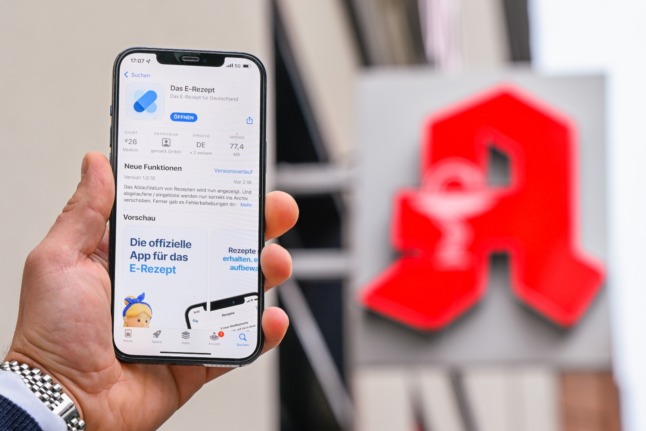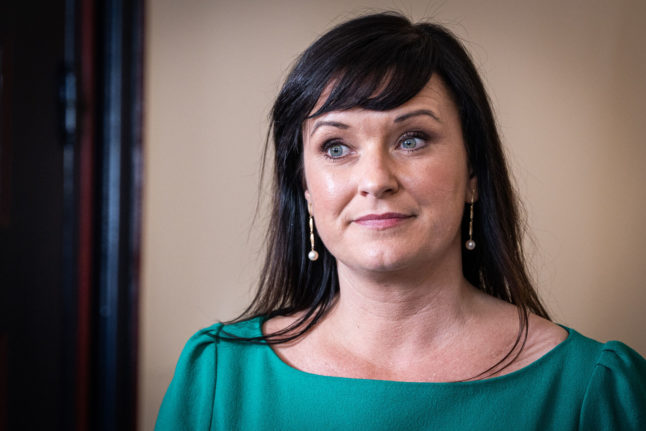What’s happening?
From January 1st 2022, people in Germany will receive their prescriptions digitally (known in Germany as an ‘e-Rezept’) from healthcare providers.
Patients should be able to get their prescription from their doctor via a QR code sent to an app, which can then be transmitted to a pharmacy. The pharmacy can then let the patient know whether their medicine is in stock (or if they want to order it), and when it is ready for collection.
This model is to be mandatory for people with statutory health insurance from the start of 2022, replacing the good old paper prescription.
However, the QR code can also be given to the patient by the doctor on a piece of paper if a patient does not have access to or doesn’t want to use a smartphone.
READ ALSO: The changes around doctors notes in Germany you should know
How exactly will it work?
In theory this is the plan – you’ll visit the doctor or have a video consultation. After the examination, the doctor will issue you with an electronic prescription for the medication that has been prescribed to you.
A prescription code is automatically created for each ‘e-Rezept’, which you will need so you can get the medicine at the pharmacy. As we mentioned above, patients in Germany can either open this QR code in the free e-prescription app developed by Gematik and the Health Ministry, or receive it as a printout from the doctor.
Next, you can take the prescription QR code (either in the app or as a printout) to your pharmacy of choice to get the medication needed.
One of the major differences and timesavers under the new system is that you can also select the pharmacy you want to get the prescription from digitally, order the medication (if needed) and you’ll be alerted when the prescription is ready. You can also arrange to have it delivered if needed.
A doctor’s signature is not required, as e-prescriptions are digitally signed.
The aim is that it will save on paperwork, time at the medical office and trips to the pharmacy.
Some patients have already been receiving digital prescriptions. The ‘e-Rezept’ was tested out successfully in selected practices and pharmacies with a focus on the Berlin-Brandenburg region of Germany. The test phase started on July 1st this year.
Pharmacies and doctors’ offices nationwide have also been given the opportunity to test the new system from the start of December.
“This will enable practice providers and pharmacy management systems to better prepare for the mandatory launch on January 2022 1st,” said aponet.de, the official health portal site for German pharmacies.

READ ALSO: 10 rules to know if you get sick in Germany
There is some leeway though – if there are technical difficulties, paper prescriptions can still be issued in individual cases until the end of June next year.
The National Association of Statutory Health Insurance Physicians estimates that it could take until mid-2022 until all users are equipped with e-prescription applications nationwide.
The obligation does not apply to privately insured people from January next year. Private insurance companies can decide voluntarily to make the preparations for their customers to use the e-prescription.
What’s this about an app?
To be able to receive and redeem prescriptions electronically, people with statutory health insurance need the Gematik ‘das e-Rezept’ app.
One issue is that the app appears to only be available at the moment in German app stores. We’ll try and find out if there are plans to change this and widen out the access, but it seems likely for that to happen.
Germany’s Covid-Warn app, for example, was initially only open to German app stores but was gradually widened out to many others.
As mentioned above though, those who don’t have access to an app will be able to use the paper with the code on it to access their prescriptions.
READ ALSO: Everything you need to know about making a doctor’s appointment in Germany
Has it all gone smoothly?
As you might expect, there have been a few hiccups.
Originally, the introduction nationwide was planned for October but was postponed due to many providers not having all the tech requirements set up.
Now though, more than 90 percent of the practice management systems have been certified by the Association of Statutory Health Insurance Physicians – a prerequisite to issue the e-prescriptions.
The e-prescription is part of Germany’s far-reaching plans to digitise and streamline the health care system.
The head of Gematik GmbH, Markus Leyck Dieken, recently spoke of a “new era” that is “finally starting for doctors and patients” in Germany.
Useful vocabulary:
Prescription – (das) Rezept
Doctor’s office/practice – (die) Arztpraxis
To order – bestellen
Pharmacy – (die) Apotheke
Video consultation – (die) Videosprechstunde



 Please whitelist us to continue reading.
Please whitelist us to continue reading.
Member comments